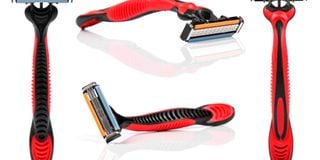Ingrown hairs in men: Prevention, care and treatment

Wash the area with a mild cleanser to remove dirt, oil, or sweat.
What you need to know:
- The easiest way to deal with ingrown hair is by taking time to prepare before shaving.
- If you already have an ingrown hair, use a warm compress if it feels itchy.
- Hydrocortisone cream may also reduce inflammation. See a doctor if the ingrown hair becomes infected.
Ingrown hairs curl and grow back into the skin instead of growing above the surface. They are often accompanied by inflammation, redness, and pus. In addition, ingrown hairs can be a real pain, both literally and figuratively. In men, they often occur after shaving and can cause considerable discomfort, not to mention the unsightly appearance.
Major causes of ingrown hairs in men
Shaving
When hair is cut too close to the skin, it can curl back and grow into the skin. This is common in areas where the hair is thick such as on the neck or chin. Improper shaving techniques can contribute to ingrown hairs.
Friction from tight clothes
Clothing that rubs against the skin can irritate hair follicles and cause them to become ingrown. Therefore, it is advisable to wear loose-fitting clothes after hair removal.
Blocked pores
If the pores around the hair follicles become blocked, it can cause hair to become ingrown. This can be caused by sweat, oils, or dead skin cells.
Symptoms of ingrown hair include
- Redness
- Swelling
- Pus or discharge from the hair follicle
- Pain, itching, or burning sensations around the hair follicle
Preventing ingrown hair
Prepare the area to be shaved
- Wash the area with a mild cleanser to remove dirt, oil, or sweat.
- Exfoliate the area to remove any dead skin cells.
- Apply shaving cream or gel and wait for it to soak in before shaving.
Shave in the direction of the hair growth, using gentle strokes
- Avoid applying pressure when shaving.
- Rinse the blade after every stroke.
- Shave slowly and carefully
- Avoid shaving too close to the skin.
- Rinse the area with cool water after shaving and apply a moisturiser.
Go for alternative hair removal methods
If you are tired of dealing with ingrown hairs, there are other hair removal methods you can try.
- Waxing removes the hair from the root, so there is less chance of it becoming ingrown.
- Laser hair removal is a more long-term solution. It uses light pulses to destroy the hair follicle, so it doesn't grow back.
Complications
It can be itchy and tempting to scratch if you have ingrown hair. However, this can aggravate the problem and cause infection.
If an ingrown hair becomes infected, it can cause a painful boil or abscess.
Ingrown hairs can also lead to keloids, raised scars that form when the skin produces too much collagen in response to an injury. Keloids can be challenging to treat and may require surgery.
Ingrown hairs can trigger hyperpigmentation, darkening of the skin around the hair follicle.




